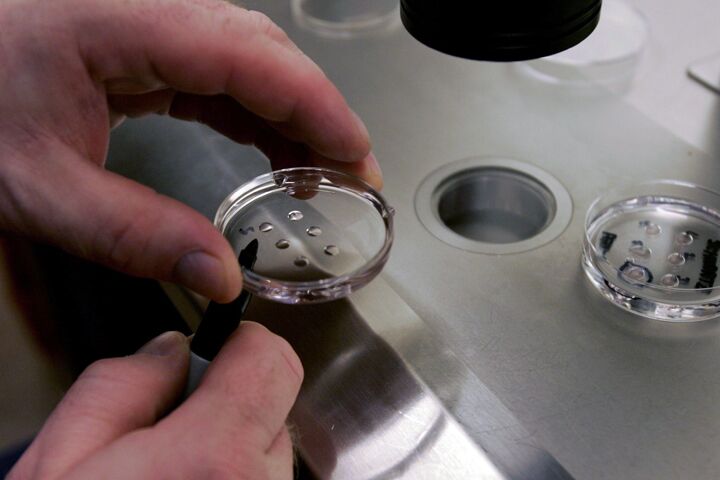
Britain’s Parliament Approves the Creation of Human-Animal Embryos
British scientists will now be allowed to splice human dna into nucleus-stripped animal eggs in order to create hybrid embryos for medical research.
May 19, the House of Commons rejected a ban prohibiting the creation of “human admixed embryos” by a vote of 336 to 176. As a result, British scientists now have the “right” to conduct the most far-reaching research into hybrid embryos in the world.
These human-animal hybrid embryos are to be used as a means of stem-cell production for research experiments searching for a potential cure for such diseases as Alzheimer’s and Parkinson’s. Scientists cite a lack of human eggs available for research as their main motivation for wanting permission to use the unfertilized eggs of animals such as cows and rabbits.
According to ScienceDaily,
The nuclear transfer technique would involve removing the nucleus of a cow egg—which contains most of its genetic information—and fusing the cow egg with the nucleus of a human cell such as a skin cell. The egg will then be encouraged to divide until it is a cluster of cells only a few days old called a blastocyst, or an early-stage cloned embryo.
The scientists would attempt to extract stem cells from the blastocyst after six days. Stem cells are building blocks that can grow into any type of tissue such as liver, heart and muscle cells. The quality and the viability of stem cells would then be checked to see if nuclear transfer technique has worked. The scientists would also be observing the way that the cells are reprogrammed after fusion to see if there are useful processes they could replicate in the laboratory. The embryo would have to be destroyed at 14 days old in accordance with the license.
A separate attempt to ban “pure” hybrid embryos—embryos produced by combining a human egg with animal sperm or vice versa—was also defeated by a vote of 286 to 223. This measure actually allows substantial genetic alteration of an embyro’s genome.
Conservative politician Edward Leigh opposes the controversial techniques, saying, quite correctly, “We’re like children playing with landmines without any concept on the danger of the technology that we are handling.”
Danger indeed. This experimentation springs from a fundamental rejection of the purpose of human life—quite distinct from that of animals—conceptualized by the very Creator of both man and animal. Mankind is blurring the transcendent, God-ordained distinction between humanity and the animal kingdom, a deliberate distinction that pulsates with exciting meaning, if one accepts biblical truth. These hybridization techniques arrogantly exalt the faculty of human reason—a wonderful gift given uniquely to man, out of all living creatures, by the Creator—above the scriptural revelation of God.
These scientists promise to solve deep mysteries surrounding some of the world’s more horrible diseases. But the reality is, the more that scientists have gone down this path—having completely divorced themselves from God’s revealed knowledge—the more destructive and beholden to the evils of human nature mankind has become. As knowledge doubles, so do the world’s troubles. Thus, the next Big Solution always lies elusively just around the corner.
To understand the real roots of the problem with these scientists’ line of reasoning, read Gerald Flurry’s article from the current Trumpet issue, “What You Don’t Know About the Roots of Civilization.” For a thorough scriptural explanation of just what differentiates man from animals, order a free copy of Herbert W. Armstrong’s inspiring volume The Incredible Human Potential.
